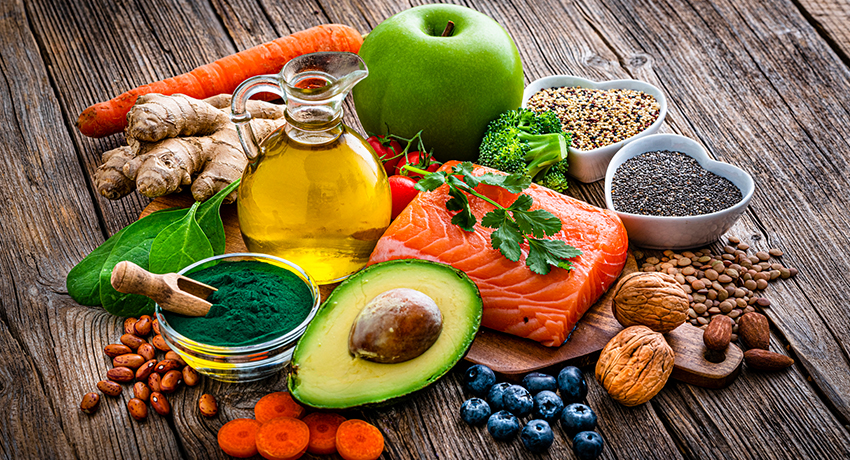Inflammation is the silent enemy lurking in your body, and your fork might be the most powerful weapon to fight back. The impact of following an anti-inflammation approach to eating is significant. It can help prevent diseases like cancer, diabetes, high blood pressure, dementia, and liver disease.
Understanding inflammation

Inflammation is more than just visible swelling. It’s a complex bodily response that can significantly impact long-term health. According to Ann E. Redwine, a registered dietitian and certified diabetes educator at UT Physicians Family Practice – Bellaire Station, understanding and managing systemic inflammation starts with what we eat.
“Sometimes inflammation is noticeable, like when you have a cut, and your skin swells and turns red,” Redwine said. “That’s actually good; it’s part of our immune system’s defense. The problem is chronic, systemic inflammation.”
The root of the problem
Post-World War II dietary shifts have contributed to increased inflammation, Redwine said. People became more sedentary, stopped doing as much physical labor, and started eating more processed foods and saturated and polyunsaturated fats.
“Inflammation can be caused by pollution, toxins, or stress, but experts blame systemic inflammation primarily on the Western diet,” Redwine said. “These dietary changes can trigger cellular-level reactions that damage tissues and DNA.”
Fighting inflammation
Redwine said that processed sugar and flour, saturated and polyunsaturated fats, and high levels of sodium in our foods are the culprits that cause inflammation. Although experts haven’t named an official “anti-inflammation diet” to follow, several dietary approaches to eating help fight inflammation.
The Mediterranean diet is best known for fighting inflammation. This eating plan emerged from observing lower cardiovascular death rates in Mediterranean regions compared to the United States. This highlighted food’s profound impact on health.
Other approaches include the DASH, or Dietary Approaches to Stop Hypertension diet (plant-based, lean protein, and low in sodium), the Okinawan diet (low-protein and plant-based), and the Nordic diet (fish-based that is high in omega-3 fatty acids). Some of the common characteristics of these dietary approaches include:
- Eat one to two servings of fruits and vegetables per meal.
- Choose whole grains over processed flour.
- Prioritize unsaturated fats, like olive oil, nuts, and avocados.
- Increase legumes and fish intake.
- Limit red meat to once every two weeks.
- Consume moderate alcohol. Red wine is preferable because it contains antioxidants.
“Fruits and vegetables have colorful pigments that are actually antioxidants,” Redwine said. “Eat a variety of colors. Each brings different inflammation-fighting compounds.”
While it might not be as convenient, Redwine said it’s better to get antioxidants from actual food rather than supplements. The synergistic effect of having it in the food is always better than isolating the single compound and taking it in high doses.
Putting anti-inflammation into action
Redwine offered a few practical shopping tips to support a goal of reducing inflammation:
- Shop the grocery store’s perimeter. The center aisles include more processed foods and fats.
- Look for “whole” as the first ingredient in grain products.
- Choose canned fruits in water or juice instead of syrup if you opt for canned instead of fresh fruit.
- Rinse canned vegetables to reduce sodium if you choose canned versus fresh vegetables.
Following these guidelines can contribute to turning meals into inflammation fighters. The result is a powerful defense plan for your best health.



